Agile
Agile is a product development model that emphasizes on flexibility, collaboration, and customer-centricity. It focuses on iterative progress through small, manageable increments called sprints or iterations. Agile aims to deliver value quickly and continuously, by adapting to changing business requirements and customer needs throughout the development process.
Core Principles
1. Customer Satisfaction: Delivering valuable software early and continuously to satisfy the customer.
2. Welcoming Change: Embracing changing requirements, even late in development, to provide a competitive advantage.
3. Frequent Delivery: Delivering working software frequently, from a couple of weeks to a couple of months, with a preference for shorter timescales.
4. Collaboration: Close, daily cooperation between business people and developers throughout the project.
5. Motivated Individuals: Building projects around motivated individuals, providing them with the environment and support they need, and trusting them to get the job done.
6. Face-to-Face Conversation: The most efficient and effective method of conveying information within a development team is through face-to-face conversation.
7. Working Software: The primary measure of progress is working software.
8. Sustainable Development: Agile processes promote sustainable development, with sponsors, developers, and users able to maintain a constant pace indefinitely.
9. Technical Excellence: Continuous attention to technical excellence and good design enhances agility.
10. Simplicity: The art of maximizing the amount of work not done is essential.
11. Self-Organizing Teams: The best architectures, requirements, and designs emerge from self-organizing teams.
12. Regular Reflection: At regular intervals, the team reflects on how to become more effective, then tunes and adjusts its behavior accordingly.
Agile Frameworks
1. Scrum: A popular Agile framework that uses fixed-length iterations called sprints, typically lasting two to four weeks, and includes roles such as Product Owner, Scrum Master, and Development Team. Key ceremonies include Sprint Planning, Daily Stand-ups, Sprint Reviews, and Sprint Retrospectives.
2. Kanban: A visual approach to managing work as it moves through a process. Kanban focuses on continuous delivery, reducing the cycle time, and improving flow by using a Kanban board to visualize tasks.
3. Extreme Programming (XP): Emphasizes technical practices and engineering excellence, such as test-driven development (TDD), pair programming, and continuous integration.
4. Lean: Focuses on minimizing waste and maximizing value by optimizing workflows, enhancing efficiency, and delivering more value with less work.
5. SaFe: The Scaled Agile Framework (SAFe) is an enterprise-scale Agile methodology designed to align development across large organizations. It combines Agile and Lean principles to facilitate collaboration, improve productivity, and enhance product quality. SAFe structures roles, responsibilities, and activities around iterative development cycles, promoting continuous delivery and alignment with business objectives. This framework helps large teams maintain flexibility while achieving strategic goals efficiently.
Benefits of Agile
Flexibility and Adaptability: Ability to quickly respond to changes in requirements, technology, and market conditions.
Customer Collaboration: Close collaboration with customers ensures the product meets their needs and expectations.
Improved Quality: Continuous testing, feedback, and improvements lead to higher quality products.
Faster Time-to-Market: Incremental delivery of features allows for quicker releases and early user feedback.
Enhanced Team Collaboration: Frequent communication and collaboration within the team improve morale and productivity.
Conclusion
Overall, Agile promotes a dynamic and collaborative approach to product development, aiming to deliver high-quality products that align with customer needs and market demands. There is a reason we skipped the '4 values of agile' because we truly believe that we cannot always value the components on the left over the right as stated in Agile manifesto. People have highly exploited the values to their convenience forgetting the actual purpose of it, causing more damage that good. Also we at BRICX™ do not recommend adopting any one specific methodology or framework of agile. Tailor your product operating model based on your specific needs.









